Toward Ladyland: On the life and work of Rokeya Sakhawat Hossain

In 1905, the year of the Partition of Bengal, Rokeya Sakhawat Hossain published "Sultana's Dream," a parable about a utopian society called Ladyland, a land without religious conflict, war, bloodshed, crime, poverty, or even mosquito bites, where all the men live in seclusion in mardanas and women run society, using science and technology responsibly and ethically. Hossain's short story appeared in Indian Ladies' Magazine, published in Madras (today Chennai), the first English-language magazine for Indian women and one of the first to be edited by a woman.
Roquiah Khatun, or Mrs. R. S. Hossein, as she signed her name in English (popularly known today as Rokeya Sakhawat Hossain, or Begum Rokeya), was born in 1880 into an educated and powerful jomidar family in the village of Pairaband in Rangpur, East Bengal, in what is now Bangladesh. Her father, like other learned men of the landed elite of his time, had studied Arabic, Persian, and Urdu. He had four wives—one of whom bore no children and one of whom was European—and a total of nine sons and six daughters. Begum Rokeya's mother, Rahatunnesa Sabera Chaudhurani, was his first wife.
Rokeya's brothers were educated locally and then sent to college in Calcutta, three hundred miles away but connected to Rangpur by railway. Abul Asad Ibrahim Saber, her older brother, attended Saint Xavier's College in Calcutta, where he encountered the ideas and activism of Syed Ahmed Khan and Syed Ameer Ali. In Rangpur he met and was influenced by the Brahmo Krishna Dhan Ghose, who was part of the small group that had traveled to Britain in 1870 with Keshab Chandra Sen but had stayed and received a medical degree from the University of Aberdeen. Among Ghose's children was the philosopher and nationalist Sri Aurobindo. These important encounters and influences, it would seem, persuaded Ibrahim Saber to defy his father's wishes and teach English and Bengali to his two sisters in secret, by candlelight in the night.
As a child, Begum Rokeya's much older sister, Karimunnesa Khanam, was taught only Arabic so that she would be able at least to fulfill her responsibilities as a Muslim and recite the Quran. But Karimunnesa resolved to teach herself Persian and Bengali by watching and listening to her younger brothers and practiced writing by drawing the lines of the Bengali alphabet in the dirt. Although her father was somewhat supportive when he first learned of her efforts, local religious leaders and neighbors soon pressured him to marry her off. When Karimunnesa was only fourteen, he arranged her marriage to the son of the jomidar Ghaznavi family. The year was 1869, the year that Syed Ameer Ali began his first sojourn in England and John Stuart Mill published The Subjection of Women. Karimunnesa was fortunate in that her husband, Abdul Hakim Khan Ghaznavi, and his family encouraged her to learn Bengali properly. Her later poetry suggests that it was a happy marriage, but tragically her husband died after nine years of married life, leaving Karimunnesa with two young sons. Determined to give the boys the best education possible, she moved to Calcutta so that they could attend school. When her older son was about fourteen, she sent him to England for further studies (and subsequently France and Italy), over the objections of many around her. The novelist Mir Mosharraf Hossain, who served as her manager on the estate until 1894, set his novel Gazi Miar Bostani (1899) around a jomidar family in northeastern Bengal and included in it an educated aristocratic Muslim female character that was undoubtedly based on Karimunnesa.
Karimunnesa continued her intellectual pursuits, studying Bengali, Arabic, Persian, and even some English after her husband's death while also shouldering her considerable jomidari and family responsibilities. As she later explained to Begum Rokeya in a letter, she decided at the age of sixty-seven to learn Arabic properly so that she could actually understand what she read in the Quran rather than merely recite it "like a parrot." She helped to finance the journal Ahmadi, first published in 1886, with the objective of fostering Hindu-Muslim amity. Karimunnesa also wrote poetry and essays that she never undertook to publish herself. In 1923–24 Begum Rokeya published a few of Karimunnesa's poems anonymously in a journal. Karimunnesa's son Abdul Halim Ghaznavi would be one of the leading Muslim supporters of the swadeshi nationalist movement in Bengal.
According to her recollections in Aborodhbashini (Women in seclusion), a book she dedicated to her mother, Begum Rokeya was made to start observing purdah when she was only five years old. While it could not have been easy, we should keep in mind that at least for the women of elite families, seclusion did not mean being confined in a small dark space but rather a demarcation of distinct male and female spaces in a vast home and estate. Begum Rokeya would remember, "We rise to the cry of the morning birds; the call of the foxes signals that Maghreb (evening) prayer is near. . . . Our childhood passed in bliss in the midst of shady forests in rural Bengal."
Rokeya later described her education at home as learning the Arabic alphabet, followed by reading the Quran. Comprehension was not an objective, let alone a priority. The furthest a woman might get with Arabic, with her father's encouragement, was to become a hafeza, one who had memorized the entire Quran. As for Persian and Urdu, she remarked, it was difficult to make progress because there were no easy books for new learners. Finally, she complained bitterly, "even in Bengal, young girls are not taught Bengali in a systematic manner."
Begum Rokeya's protégée and first biographer, Shamsunnahar Mahmud, later reported Rokeya's deep gratitude for her siblings' "love and care" in the matter of her education. Although the educated Muslim Bengali elite of her time frowned on Bengali and preferred Urdu and Persian—because they felt Bengali was not sufficiently Islamic—the young Rokeya had the opportunity to master both Bengali and English with the help of a supportive older brother, older sister, and husband. She dedicated the second volume of Motichur, her collection of previously published essays, to her apajaan (beloved older sister) Karimunnesa, in appreciation for the "grace of your affection" and "blessings" that allowed her to learn Bengali despite the hostility around them and to learn it well enough that she didn't forget it during her "14 years in Bhagalpur, where I didn't find a single person with whom to speak in Bengali." Similarly, for his role in her education, she dedicated her 1924 novella Padmarag (The ruby) to her older brother, Ibrahim Saber, who "moulded me single-handedly" and was "my only instructor."
In 1896, when Rokeya was sixteen, Ibrahim arranged her marriage to Syed Sakhawat Hossain, a member of the Bengal Civil Service. Although raised speaking Urdu in Bhagalpur in Bihar, Sakhawat Hossain had learned a little Bengali while studying at Hooghly College in Bengal. He had also traveled to England on a government scholarship to study agriculture. A widower with a daughter, he was some twenty years older than Rokeya. Ibrahim had met him when he was stationed in Rangpur and must have concluded that he would be supportive of his sister's intellectual interests. Indeed, Sakhawat Hossain actively encouraged Rokeya's continued education, and she was able to overcome her homesickness by channeling her energies into writing. Rokeya gave birth to two daughters, but neither survived beyond a few months. These losses, combined with her husband's diabetes, failing eyesight, and finally his death thirteen years into the marriage, made for a relatively brief and unhappy married life. However, she remained grateful for Sakhawat's active support. He encouraged Rokeya to socialize with educated women of the Hindu and Christian communities in Bhagalpur, and this no doubt helped Rokeya gain a broader perspective on women, education, and religion.
Sakhawat passed away in 1909, leaving Rokeya a large sum of money to be used specifically in support of women's education. She founded a girls' school in Bhagalpur that same year, but a family dispute soon forced her to move to Calcutta. There, in 1911, she started the Sakhawat Memorial Girls' School. Other Bengali Muslim women—invariably of well-connected wealthy families—had started schools in recent decades, but the only two to have survived to that point were the Nawab Faizunnesa Girls' School and the Suhrawardy Girls' School. The latter was founded in 1909 by Khujista Akhtar Begum, who had studied closely with her father, Obaidullah al-Obaidi Suhrawardy, the first superintendent of the Dacca Madrasa and a teacher of Syed Ameer Ali and others. Her son Hussain Shaheed Suhrawardy would serve as prime minister of Pakistan.
Alongside her work with the school, Rokeya became involved in several women's organizations. In 1916 she founded the Bengal branch of Anjuman-e-Khawatin-e-Islam (All India Muslim Ladies' Conference), whose primary purpose was social work, including literacy training, among poor women. It was the first organization in Bengal founded specifically to bring together Muslim women, much to the consternation of the samajpatis—literally, lords of society, as she called the powerful conservative men who opposed her efforts. Over the years the Bengal branch would operate increasingly autonomously of the original Anjuman based in Aligarh. She was also involved in several organizations that brought together women of different religious communities, such as the Bangiya Nari Samaj (Bengali Women's Society) that campaigned for female franchise in Bengal, the Bengal Women's Education League, and the All India Women's Conference.
Begum Rokeya wrote primarily in Bengali and started publishing in 1902, mainly essays on social issues. Her 1903 piece "Alonkar na badge of slavery" (Jewelry or badge of slavery), marked the start of Rokeya's explicitly feminist writing. It was published in the Calcutta journal Mahila (Woman), edited by Girish Chandra Sen, a Brahmo who, interestingly enough, had been the first to translate the Quran into Bengali. In "Alonkar" Rokeya warned women against allowing themselves to be belittled and bribed with trinkets and jewels, which were nothing but marks of "slavery on our bodies," much like the "iron shackles" of prisoners.
A modified version of the essay appeared as "Amader Abonoti" (Our degradation) in September 1904 in Nabanoor (New heavenly light), edited by Syed Emdad Ali. One of the earliest periodicals to be published by Muslim intellectuals in Bengal, Nabanoor ran between 1903 and 1906 and actively invited women to participate and "assist us in our literary efforts and lead the nation to greater development." Begum Rokeya heeded the call, along with many other women, Hindu and Muslim. Another version of this article, with the title "Strijatir Abonoti" (The degradation of women), was included in her first collection of essays, Motichur (A string of pearls), also published in 1904. In the course of the revisions and modifications, five powerful paragraphs were expunged because of the furor they had already provoked, no doubt because they were critical of religion: "Whenever a sister has tried to lift her head, her head has been pulverized with the excuse of religion or the force of utterances from holy texts. . . . It must be said that, ultimately 'religion' has strengthened the bonds of our enslavement; men are lording over women using the pretext of religion."
These passages were removed because they outraged many readers. With her criticism of "religion" generally, she had offended not only her fellow Muslims but also members of the other communities among whom she lived in early twentieth-century India. Even though she was writing in a period of growing Muslim nationalist sentiment among some elite Muslim males that would culminate in the 1905 Partition of Bengal, Rokeya had no interest in claiming the superiority of women's rights under Islam in such matters as inheritance or the right to contract. For her all religions, including Islam, were inherently problematic for women. Even though she was writing in the early years of the Indian anticolonial nationalist movement, Rokeya did not subscribe to the Indian nationalist position that the Indian private sphere, and hence its denizens, women, were morally and spiritually superior to their Western counterparts. Finally, writing at a time of imperial Britain's preoccupation with downtrodden Indian and Muslim women, she was not particularly impressed with the Western model of women's emancipation or the efforts of some Indian male reformers to usher in modernity simply by unveiling women. In "Strijatir Abonoti" she wondered whether the Parsi (Zoroastrian) women of India, who had been among the first to unveil and wear Western dress, were "truly free from mental slavery." Her response: "Certainly not! Their unveiling is not a result of their own decision. The Parsi men have dragged their women out of purdah in a blind imitation of the Europeans. It does not show any initiative of their women. They are as lifeless as they were before. When their men kept them in seclusion they stayed there. When the men dragged them out by their 'nose-rings' they came out. That cannot be called an achievement by women."
In contrast to many of her male contemporaries across religious communities, Rokeya wanted to educate girls and women to develop their intellectual faculties and help them attain economic independence. For example, the daughter of Brahmo reformer Keshab Chandra Sen would later describe the curriculum at the college her father had founded in Calcutta—and named after Queen Victoria—as focused on teaching girls only what would be useful in their roles as wives and mothers. While Begum Rokeya acknowledged the reality that most women of her time would marry and become mothers, she, like feminists before her, deplored the vast gap between the education of men and that of women: "When the man measures the distance of the sun and the stars from the earth, the wife measures the size of a pillowcase (for sewing). When the husband, through his flights of imagination travels the solar sphere surrounded by the planetary system, measures the dimension of the sun . . . and detects the movements of the comets, the wife loiters in the kitchen, weighs the food items for cooking and observes the movements of her kitchen help."
And, indeed, the curriculum at Begum Rokeya's school was quite broad. As someone familiar with the school explained in a letter, "Everything is taught at the school, from Quran recitation and its tafsir [exegesis] to English, Bengali, Urdu, Persian, Home Nursing, First Aid, Cooking, Sewing and whatever else are essential for Muslim girls to learn." Rokeya had decided that geography, history, and health science were also necessary. However, in her presidential address at the first Bangiya Nari Shikkha Samiti (Bengal Women's Educational Conference) in February 1927, Rokeya lamented that the girls often performed badly in these subjects. She explained that this happened "because they do not get to see any other place in this world except for their school campus and the private quarters of their own homes, and remain unaware of the rest of the people of the world except for their own father and brothers." What they needed was a "good education." For Rokeya and her contemporaries, education was far more than literacy: it was the very means to women's greater presence and participation in the larger society.
Thinking pragmatically, however, she provided curtained transportation for her students because she knew that without it many girls would not be allowed to attend at all. Although she never came out of purdah herself—that is, she always covered her hair—she was fiercely critical of the practice of seclusion, whereby women had separate quarters in elite homes that they were not allowed to leave. As she noted in her presidential address, seclusion curtailed women's knowledge of the world. At the same time, as her comment about the Parsis shows, she recognized the superficiality of the liberation bestowed on women by male reformers who were eager to impress Western powers.
In Rokeya's eyes the ill-treatment of women was a worldwide problem that afflicted not only the women of India—Hindus, Muslims, Christians, Buddhists, and Parsis—but also the women of imperial Britain. In "Ardhangi" (The female half), first published in the monthly magazine Mahila (Woman) in 1903, she wrote of Christian women who, despite all the opportunities for education available to them, "cannot rid themselves of mental slavery" and remain "preoccupied with the thoughts of buying a new bonnet," oblivious to the "prosaic reality of the load of debt." Her novella Padmarag (1924) is similarly populated with female characters of various religious backgrounds. This "gallery of oppressed wives" includes Helen Horace, a White British woman whose story was inspired by the newspaper reports of the real-life ordeals of Cecil Rutherford. Upon hearing about Helen's unhappy experiences, a Muslim character called Sakina laments, "This England—this noxious, putrid England—claims to be civilized!"
Rokeya's partial translation to Bengali of the 1896 novel Murder of Delicia, by the best-selling and prolific Victorian author Marie Corelli, also represented an effort to prompt her readers to look anew at women's lives in both Britain and India. Rokeya chided Indians who subscribed to the notion of European civilizational superiority and assumed that women there are "free, exceptionally talented, equal to men, honoured in society and what not." She pointed out that Delicia's story revealed a very different situation, not unlike that in which Indian women found themselves: "Everything is hollow! . . . In London, the site of civilization and liberty, hundreds of Delicia murder stories are being staged. Alas! Women are defenseless everywhere in the world!" In both India and England, despite the veneer of egalitarianism in the latter, laws and institutions discriminated against women and left them vulnerable to the machinations of unscrupulous male relatives. In both contexts, Rokeya demonstrated, the ideal woman was docile and subservient, and women tended to remain as such since the laws, to quote Corelli, were "made by men for themselves and their own convenience." Ultimately, having identified common problems, she seemed to see Delicia as worse off in many ways than the Indian Muslim character Mazluma. For example, as a Muslim woman, Mazluma, unlike Delicia, had no obligation to contribute to her husband's or even her household's expenses. "Is this civilization? Is this chivalry?"
Closer to home, Rokeya recognized the problematic treatment of women in the Hindu religious texts and often in practice but also noted the advances that the Hindu community had made recently in female education. In an English article published in the Mussalman on 6 December 1927, aptly titled "God Gives, Man Robs"—the title a bitter reversal of the old saying "Man proposes, God disposes"—she challenged Muslim men to do better for Muslim women. "It is an irony of fate," she wrote, "that the Hindus who are bound by their cartload of Shastras to treat the women like slaves and cattle and to get their daughters married before they were hardly above their girlhood, i.e., within ten years of age, are, as a matter of fact, allowing the greatest liberty to their womenfolk and giving them high education." She reminded her readers that Islamic scriptures already called for more rights for women than they currently enjoyed, that God "has made no distinction in the general life of male and female," and that the Prophet had stipulated that it was the duty of both men and women to acquire knowledge. Yet, she lamented in this and other articles, Muslim men continued to violate Muslim women's rights under Islam, such as the right to consent to a marriage and the right to inheritance. For her, however, the "worst crime which our brothers commit against us is to deprive us of education."
In an effort to persuade the Indian Muslim opponents of female education that Muslim women enjoyed a God-given right to education, that its very idea was grounded in Islam, not copied from the West, Rokeya eagerly pointed out how other Muslim countries had advanced the cause of female education. Her 1927 presidential address to the Bengal Women's Educational Conference, mentioned earlier, identified Egypt and Turkey as countries that were once "opposed to women's education, but having lost and learnt from their mistakes, they have now returned to the right path," a reference no doubt to the right path of Islam. Moreover, "Turkey did not follow directly in America's footsteps; rather, it fulfilled one of the inviolable teachings of our religion, because the first person to ever mandate giving equal education to both men and women as a duty was our revered Prophet." Rokeya went on to criticize the hypocrisy of Muslims: "the same Muslims who are willing to lay down their lives in the Prophet's name (or even at an insult of a piece of brick [thrown] at a dilapidated mosque), why are they reluctant to follow an authentic guidance from the Prophet?" To appeal to Muslim men's sense of competition with the other communities—in education, employment, and political power—she quoted Shaikh Abdullah, who with his wife, Wahid Jahan Begum, had founded a girls' school in Aligarh in 1906 and was a close associate of Syed Ahmed Khan's: "How can a community that keeps half its population ignorant as well as imprisoned in the form of purdah compete in the affairs of life with those who have introduced equal opportunities for their women?" She called out Muslim men's willingness to donate generously to prestigious institutions of higher learning designated for men and yet claim poverty when she asked for money for female education: "The Muslim men think that they can enter heaven by relying on a few graduates from Aligarh University, Dacca University and the Islamia College in Calcutta, and will be able to carry their wives and sisters stuffed in a handbag while traversing the causeway." But since each Muslim was responsible to God for himself or herself, "instead of hoping to enter heaven riding on another's shoulder, women should focus on the education of their daughters."
Begum Rokeya's vision for the future extended far beyond her immediate community of Bengali Muslims to encompass Indian women generally and toward an India in which the various communities could progress together while retaining their differences. As she put it in her essay "Sugrihini" (The good housewife), "We are not only Hindu or Muslim or Parsi or Christian nor are we only Bengali, Madrasi, Marawari or Punjabi—we are Indians. We are first and foremost Indian, and then Muslim, Sikh, or something else." Even "Sultana's Dream" opens with the narrator "thinking lazily of the condition of Indian womanhood," while her essay "Ardhangi" concludes with a rousing call to education for all women in India, since "unless the Indian women awake, India cannot arise." She clarified, "I want the best for my sisters, and do not intend to encroach upon the social and religious ties. . . . To progress mentally, a Hindu doesn't have to renounce her Hindu identity or a Christian her Christian identity. We can liberate the mind while retaining our respective ethnic differences." The problem, she believed, was "our lack of education," which, as she wrote in the original "Strijatir Abonoti," denies women the "qualifications to be sages and saints" themselves and to blindly accept "these religious texts [that] are nothing but rules and regulations created by men."
Despite her dependence on the colonial government for its formal recognition of her school and for funding, Rokeya did not hesitate to speak out against British colonial rule, though often in subtle ways and typically in conjunction with her main passion, women's rights and especially women's education. Her story "Gyanphal" (The fruit of knowledge), for example, is the allegorical story of an island, Kanak, which receives visitors who are "beautiful looking, but except for their physical beauty . . . didn't have much to boast about." The trade arrangements established by these visitors led to famine. The story concludes not only with the liberation of the Kanak people from the exploitative outsiders but with an admonition that the society will not prosper unless women are granted full access to the fruit of the knowledge tree.
Similarly, "Nurse Nelly," based on a true story, is the story of a cleaner in a women's hospital in the North Indian city of Lucknow. Once a homemaker in a middle-class Bengali Muslim home, Nayeema had been converted to Christianity by nuns, renamed Nelly, and brought to Lucknow. In recounting Nayeema's suspenseful if melodramatic metamorphosis, the narrator bemoans the dangers posed both by missionaries and by the low levels of education among women. While sightseeing in Agra, the narrator supports her point about the need for education for men and women alike by comparing Mumtaz Mahal, "the woman who lies buried in that far-famed mausoleum [the Taj Mahal]" built for her by her husband, Mughal emperor Shah Jahan, with the earlier Empress Nur Jahan, whose "humble, ordinary tomb lies neglected . . . in a little-known place in Lahore." It was education, not a grand tomb, that "has made [Nur Jahan] . . . immortal. . . . It is the grace of education that has made her a radiant and renowned figure. God forbid, the Taj Mahal can be destroyed by an earthquake or by war, but Nur Jahan's glory will last forever."
Toward the end of her life, with the Indian nationalist movement in full sway, Rokeya alienated many Indians with her refusal to condemn the US writer Katherine Mayo's book Mother India. Mayo, whose trip to India had been set up in collusion with British colonial authorities, argued in her 1927 book that Indian practices such as child marriage essentially rendered the country unfit for self-rule or independence. Bengal, as the "seat of bitterest political unrest," received special attention as "among the most sexually exaggerated regions of India." The book provoked a flurry of furious and critical reviews, including one from Gandhi himself, titled "Drain Inspector's Report." British colonial officials, for their part, encouraged its circulation among Muslim readers in the hope that a book focused on ostensibly Hindu social evils would help to create a rift between Hindus and Muslims in the nationalist movement. In her essay "Rani Bhikarini" (The beggar queen), Rokeya upbraided the Muslim men who seemed to think that the problems Mayo described pertained only to the Hindu community: "Take a look at yourselves in the mirror. Look how you too have dressed the queens of your society in the garb of beggars. Let alone granting women their rights, there is no country, no race, no religion in this wide world which has acknowledged women's sense of self." Not only did Rokeya refuse to allow nationalist concerns to force the question of women's rights to the background, but she also dismissed the idea that the status of women was an indicator of a country's ability to govern itself, given women's lowly status everywhere. For Rokeya, then, women's emancipation and anticolonial and anticommunal struggles were deeply intertwined and indeed analogous. As she put it with some bitterness in her 1927 Bengal Women's Educational Conference address: "As the altruistic British government cannot suffer the aspirations of the Indians . . . and our non-Muslim neighbours often cannot put up with the rights and claims of the Muslims, so the Muslim men cannot grant any wish to their women to prosper." Given "how intimately connected to with one another" we are, she continued, "as long as the Muslim men pay no heed to the aspirations of their women, the two hundred and twenty million other Indians will . . . ignore the eighty million Muslims in the country [and] the British government also will not yield to their demands."
Elora Shehabuddin is Professor of Gender and Women's Studies, and Global Studies at University of California, Berkeley.

 For all latest news, follow The Daily Star's Google News channel.
For all latest news, follow The Daily Star's Google News channel. 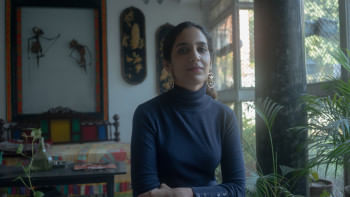
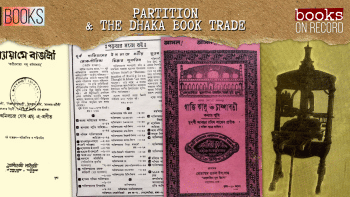

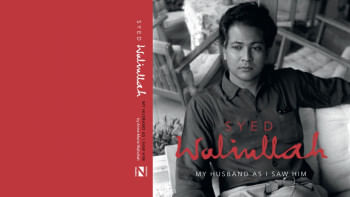
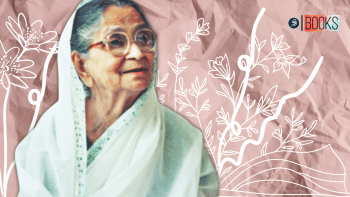
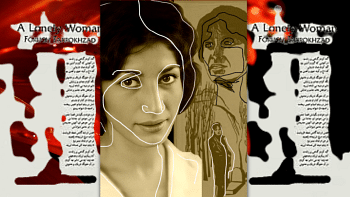





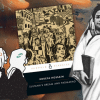

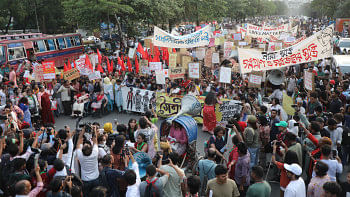
Comments